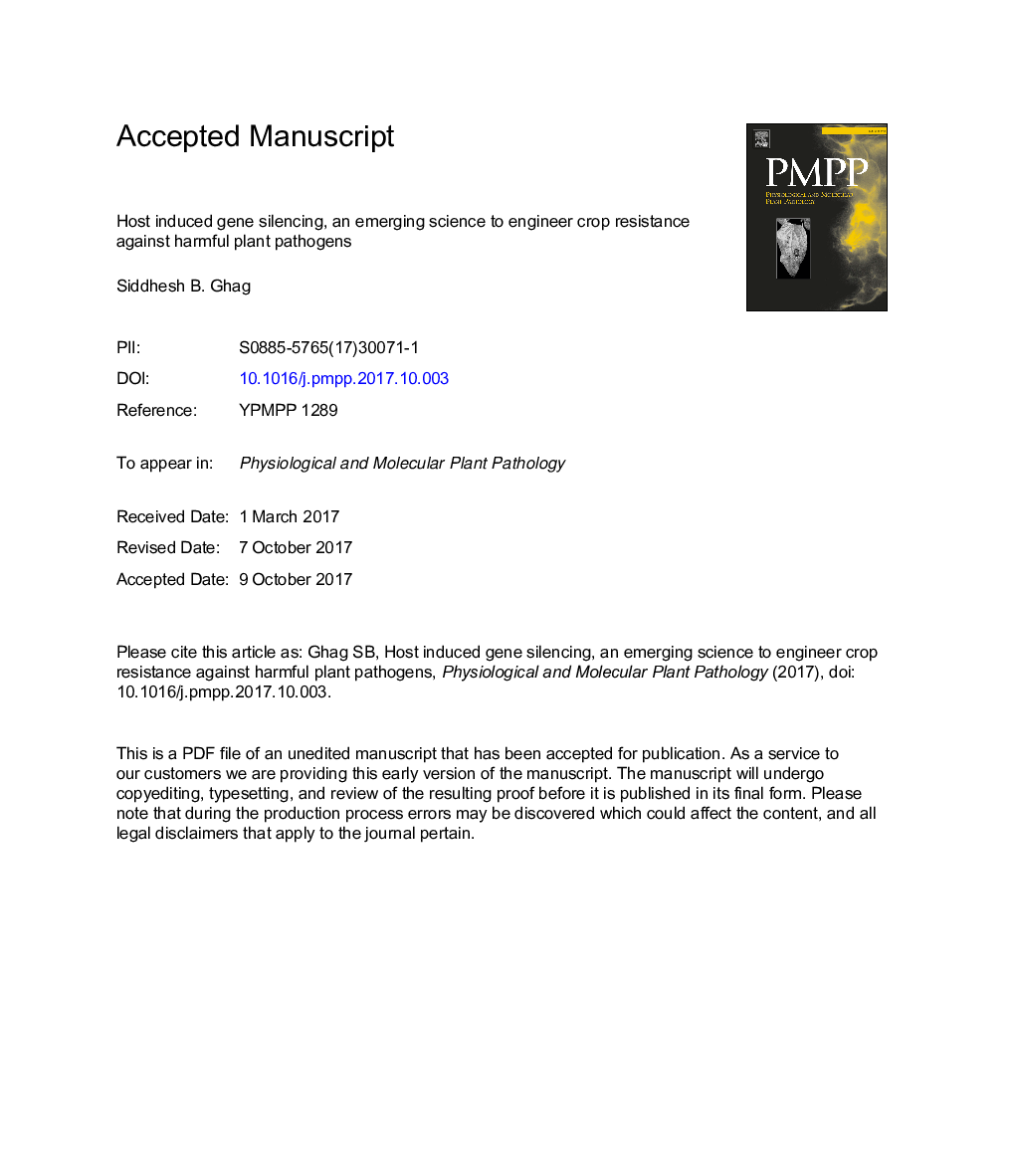| Article ID | Journal | Published Year | Pages | File Type |
|---|---|---|---|---|
| 8649326 | Physiological and Molecular Plant Pathology | 2017 | 42 Pages |
Abstract
RNA interference (RNAi) has rapidly progressed as one of the most important genetic tools to understand gene function. Moreover, conservation of the RNAi machinery and pathway across kingdoms enabled plant biotechnologists to engineer disease resistance in crop plants. This is achieved by transforming the plant with double stranded RNA constructs targeting vital pathogen genes or host susceptibility genes. The double stranded RNAs (dsRNAs) and small interfering RNAs (siRNAs) generated in the transgenic host plant find their entry into the nematodes and fungal pathogen, during interaction and subsequently cleave the cognate mRNAs. Numerous studies conducted so far have demonstrated successful application of RNAi technology (termed as HIGS) in plants to protect against a wide range of pests and pathogens such viruses, bacteria, fungi, nematode and plant parasites and herbivorous insects that cause significant economic loss. The present review emphasizes the potential of RNAi technology for developing crop plants resistant to pests and pathogens.
Related Topics
Life Sciences
Agricultural and Biological Sciences
Plant Science
Authors
Siddhesh B. Ghag,
